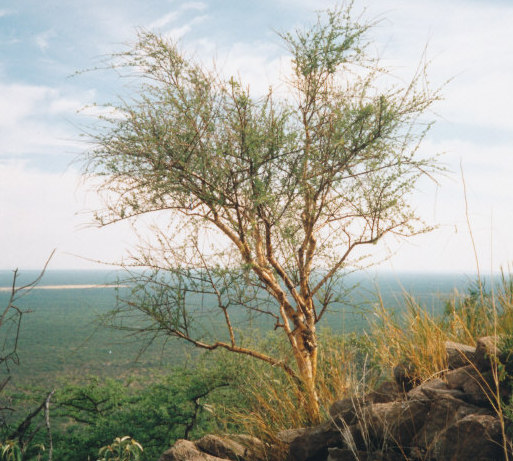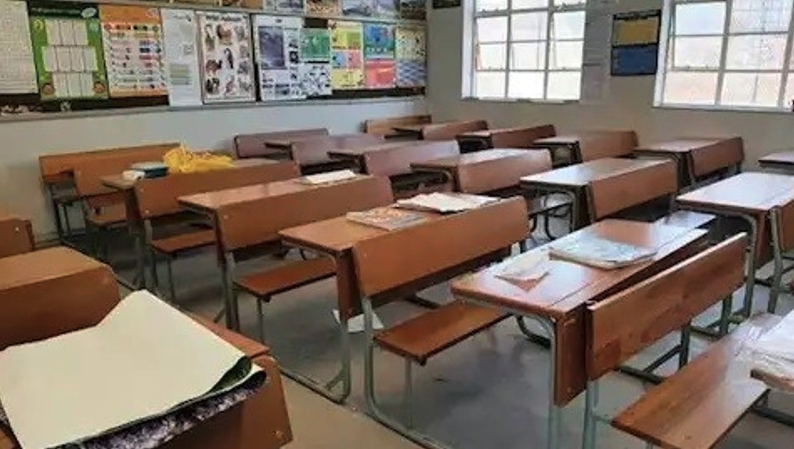THIS shrub or small tree of up to six metres has a slender, upright canopy. It is fairly widespread along the eastern edge of the Namib and generally on hillslopes and moutains and in sandy valleys as far east as the Otavi mountains.
It is also found in Botswana and Mpumalanga. Because its bark tends to peel in cream-coloured to golden papery strips it may easily be mistaken for a corkwood tree (Commiphora spp.).
However, if you pick up a leaf or scratch the bark a sticky white milky fluid oozes out, indicating that this plant belongs to the spurge or Euphorbia family. The latex of the corkwood trees is clear and watery. Before starting to peel, the bark of the paper-bark euphorbia is smooth, waxy and dark brown. Young branches are slender, plum-coloured and hairless.
Leaves are only present in summer. They are simple, pale green and eliptic, measuring ca. 17 – 32 x 5 – 9 mm, finely downy and have a prominent midrib. The margin is finely fringed with hairs.
The small yellow-green flowers appear at the tip of dwarf-shoots before the leaves from October to May. Typical of the spurge family, they are what is known as a cyathium, that is a cup-like structure containing a single pistil and male flowers each with a single stamen. The fruit is a smooth three-lobed capsule up to 6 mm in diameter.
Names: A. papierbasmelkbos; G. Papierrindenwolfsmilch; H. omupondororwa. The plant is named guerichiana after the German geologist Georg Guerich (1859 – 1938) who collected plants in Namibia.
Due to its unusual bark and pleasing shape the paper-bark euphorbia would make an interesting feature plant in a dry garden.
Some of these trees used to grow around the entrance to the Hotel and Entertainment Centre south of Windhoek, which incidentally used to be almost a botanical garden of plants found in the drier north-western regions of Namibia.
It is still worthwhile to take along your tree book and try to identify some of the plants growing there even though, sadly, many have disappeared, probably due to the very wet weather in 2011 when Windhoek received about three times its average rainfall, followed by heavy frost very early in winter.
The leaves of the paper-bark euphorbia are browsed by small stock and the dry branches may be used for fire sticks, i.e. for making fire by friction. In this ancient method of lighting a fire a pointed stick is vigoroulsy twirled in a notched stick. Eventually, due to the friction, glowing wood dust is produced, which is then blown very gently into a pile of dry grass which catches fire easily. It requires an enormous amount of energy to start a fire in this manner.
Therefore it is ususally done by two people, sitting opposite each other and holding the notched wood with their feet, one taking over the twirling from the other without interruption. The notched wood needs to have a large soft core while the pointed stick should be fairly hard.
Stay informed with The Namibian – your source for credible journalism. Get in-depth reporting and opinions for
only N$85 a month. Invest in journalism, invest in democracy –
Subscribe Now!






